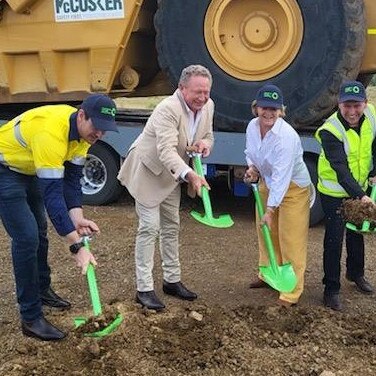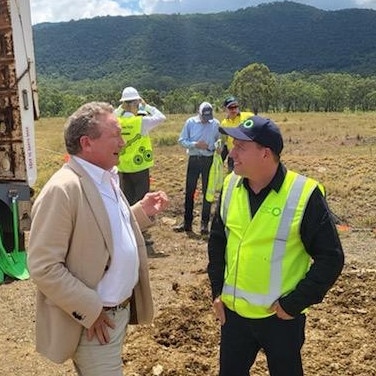Twiggy Forrest’s Fortescue starts construction on Green Energy Manufacturing Centre in Gladstone
Mining magnate Andrew ‘Twiggy’ Forrest has a vision to transform Queensland into a green energy superpower which will provide jobs for generations - and he’s starting in Gladstone. Full details here.
Gladstone
Don't miss out on the headlines from Gladstone. Followed categories will be added to My News.
Construction of the world’s largest electrolyser facility has begun as Fortescue Metals and the state government strive to transform Queensland’s energy economy.
The new facility, at Gladstone, will initially double Fortescue’s current global production of green hydrogen and will create hundreds of jobs for regional Queenslanders.
The Green Energy Manufacturing Centre (GEM) will become a major pollution-free manufacturing hub and is targeting to produce 15 million tonnes of hydrogen by 2030.

The facility is expected to create more than 100 jobs during the construction phase, 50 permanent jobs and hundreds of indirect jobs in the local supply chain.
Fortescue founder, Dr Andrew Forrest, said the Aldoga facility would become an epicentre for Queensland’s green hydrogen ambitions and build on Gladstone’s skilled workforce and world-class port.
“The world is moving on from fossil fuels and the green industrial revolution is underway,” Dr Forrest said.
“(The) game changing electrolyser facility in Gladstone is putting Queensland at the centre of this revolution, which is creating an entirely new industry and thousands of multi-generational jobs.”

Deputy Premier Steven Miles said the 100-hectare Gladstone site was the ideal location for Australia’s first electrolyser manufacturing hub.
“Not only is this project a win for the environment, thousands of jobs could flow from this manufacturing facility for Queenslanders in the coming decades,” Mr Miles said.

This marks the beginning of construction for the $114m first stage of the facility, following approval from Queensland’s Coordinator-General in November.
Fortescue will develop the site in stages which will eventually include the capacity to build other green manufacturing technologies such as cables, batteries, wind turbines and solar panels.




